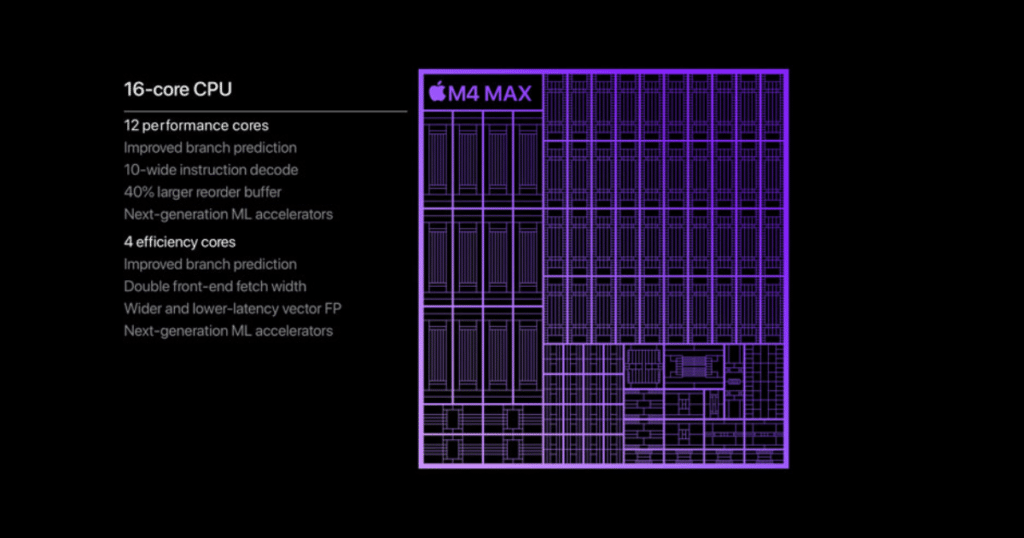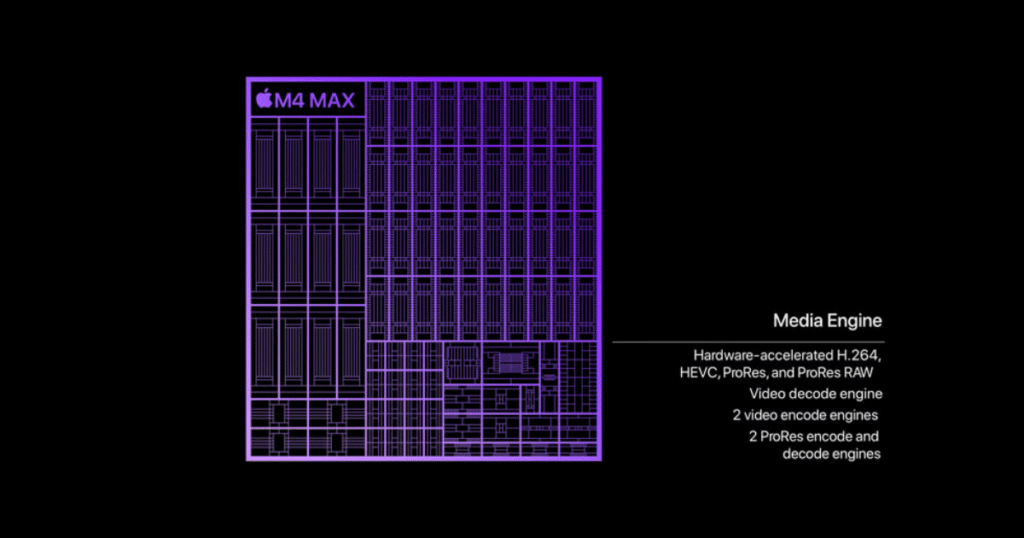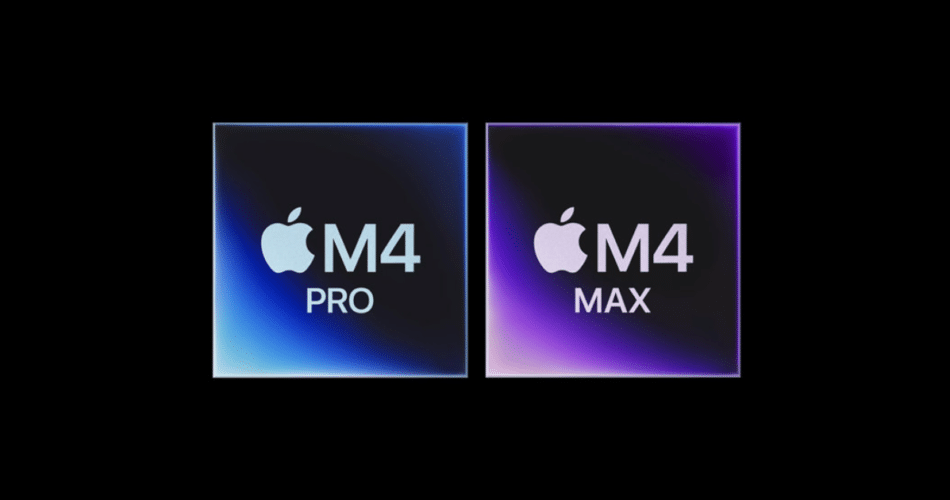Apple has officially introduced its latest powerhouse chips, the M4 Pro and M4 Max, designed to elevate the performance of the Mac lineup, including the newly launched MacBook Pro models. Built using second-generation 3-nanometer technology, these chips promise significant advancements in both performance and power efficiency, cementing Apple’s position at the forefront of computing innovation.
The M4 Pro features a robust 14-core CPU, consisting of 10 performance cores and 4 efficiency cores. Apple claims that this architecture offers an impressive 1.9 times faster performance compared to the M1 Pro and is 2.1 times quicker than Intel’s Core Ultra 7 258V.

For users seeking even more power, the M4 Max takes performance to the next level with a 16-core CPU that includes 12 performance cores and 4 efficiency cores. This configuration allows the M4 Max to achieve a remarkable 2.2 times the performance of the M1 Max and 2.5 times that of its Intel counterpart, making it the fastest laptop chip available on the market.

When it comes to graphics capabilities, the M4 Pro is equipped with up to 20 GPU cores, providing graphics performance that is twice as effective as that of the M4 and 2.4 times faster than Intel’s leading chips. In contrast, the M4 Max boasts up to 40 GPU cores, delivering graphics performance that is 1.9 times faster than the M1 Max and up to four times quicker than competing AI PC chips. Notably, the M4 Max also supports advanced ray tracing capabilities, making it ideal for professional creatives working with demanding visual tasks.
Memory and bandwidth have also seen significant improvements with these chips. The M4 Pro supports up to 64GB of unified memory, offering a memory bandwidth of 273GB/s. This represents a 75% increase over the M3 Pro and is twice the bandwidth available in current AI PC chips. Meanwhile, the M4 Max can handle up to 128GB of unified memory, boasting an impressive bandwidth of 546GB/s, which is four times greater than that of the latest AI PC chip. This enhanced capacity allows developers to work with extensive language models, reaching nearly 200 billion parameters, further pushing the boundaries of what’s possible in computational tasks.
Both the M4 Pro and M4 Max chips come with support for Thunderbolt 5, facilitating data transfer speeds of up to 120Gb/s, more than double that of Thunderbolt 4. This enhancement greatly expands connectivity options for users with high-speed peripherals, ensuring seamless integration with the latest technology.
The M4 Max also features an advanced media engine, including two video encode engines and two ProRes accelerators, making it a prime choice for video professionals. This media engine supports hardware acceleration for various formats such as H.264, HEVC, ProRes, and ProRes RAW, streamlining the workflow for creators who rely on high-quality video processing.

In terms of machine learning capabilities, both chips incorporate a more powerful Neural Engine designed to meet the increasing computational demands of Apple Intelligence. This enhancement improves performance across applications, making it easier to leverage machine learning features.
Apple emphasizes that users can expect a 20% overall performance boost with the M4 Max compared to the M3 Max, primarily due to the combination of additional and faster cores. The M4 family also promises enhancements in single-threaded and multithreaded performance, making them ideal for demanding tasks such as video editing and large-scale computations.
Subscribe to our email newsletter to get the latest posts delivered right to your email.

